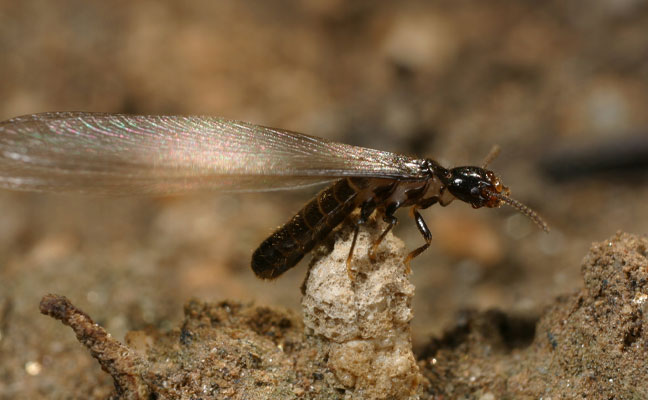
Reticulitermes rusti, a subterranean termite genetically distinct from established species, has been formally described. While at press time there is no common name for the species, its scientific name honors retired Pest Management Professional Hall of Famer Dr. Michael Rust (Class of 2007). He is professor emeritus of the University of California-Riverside (UCR).
The discovery, based on integrated genetic and morphological analysis, confirms that the termite population attacking structures in Southern California is more diverse and complex than the commonly known western subterranean termite (R. hesperus) and arid-land subterranean termite (R. tibialis) — something that was hypothesized as early as 2023. A paper describing the details of these findings appears in the July 3 issue of the Annals of the Entomological Society of America.
Distinguishing features
The research found that while the soldier caste of R. rusti is morphologically similar to R. hesperus, genetic evidence strongly distinguishes it from other California subterranean termites.
Swarming behavior is another separating factor. Unlike R. hesperus, which typically swarms in the spring, R. rusti swarms from late fall through winter — defined as November through January — often following the first fall rains. The timing differences could help pest management professionals (PMPs) for proper identification and timing of treatment.
According to an interview for the Entomological Society of America’s Entomology Today, co-author Dr. Chow-Yang Lee, BCE, says it’s not clear yet when R. rusti first came to be. One theory is that a 1920 description of R. hesperus mentioned that the species swarmed in both fall and spring. Because of that description, Dr. Lee, UCR Professor and Endowed Presidential Chair in Urban Entomology, told Entomology Today, “I am pretty sure that R. rusti was already present in Southern California at that time.”
More species to come?
Previous studies cited in the new paper’s analysis suggest that at least five Reticulitermes species could be present in the Golden State. Researchers used both molecular and morphological evidence to separate R. rusti from its nearest relatives. This approach will now be turned toward other populations, with the possibility of formally describing at least two additional unnamed termite species in the coming years.
Leave A Comment